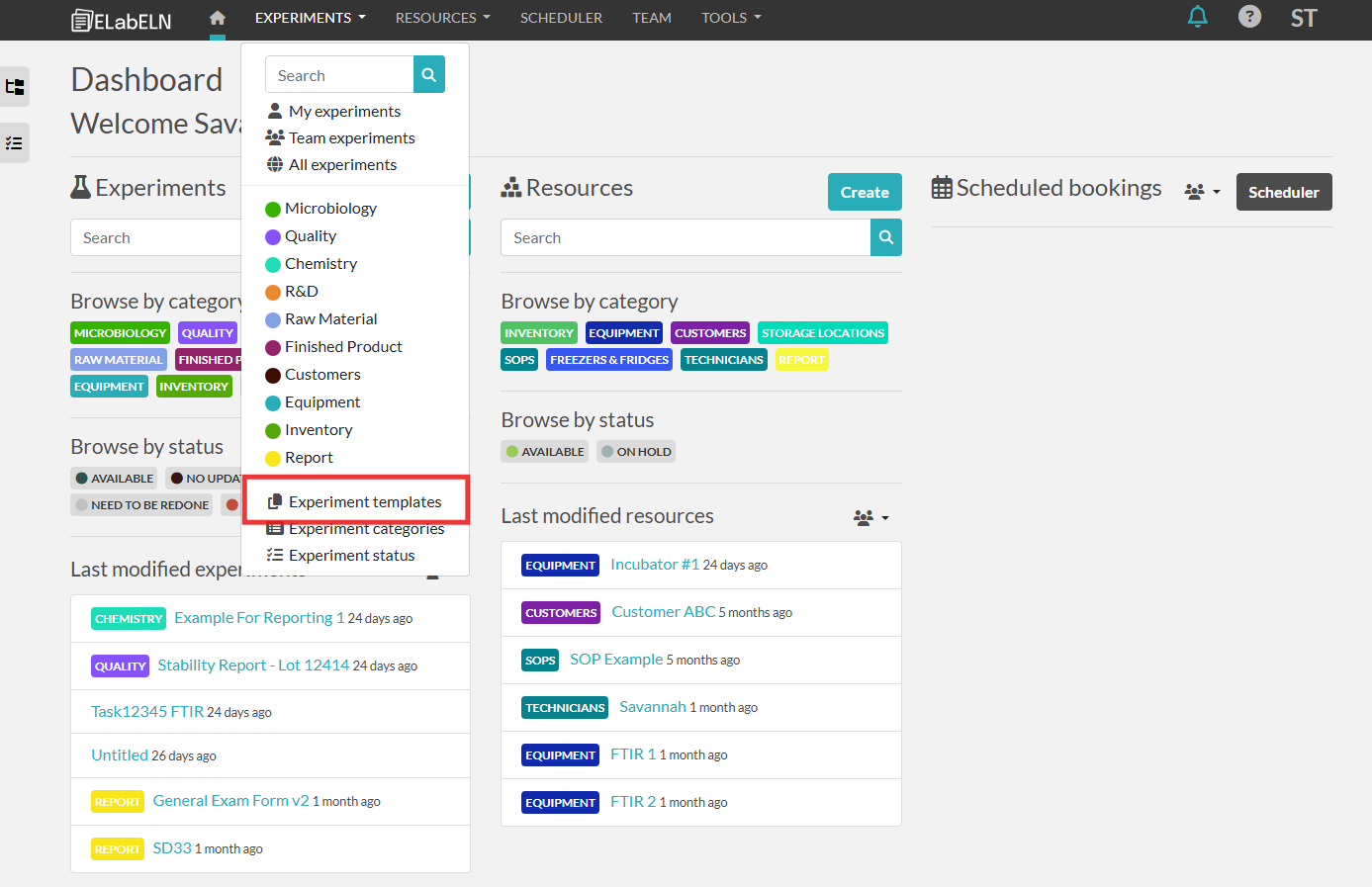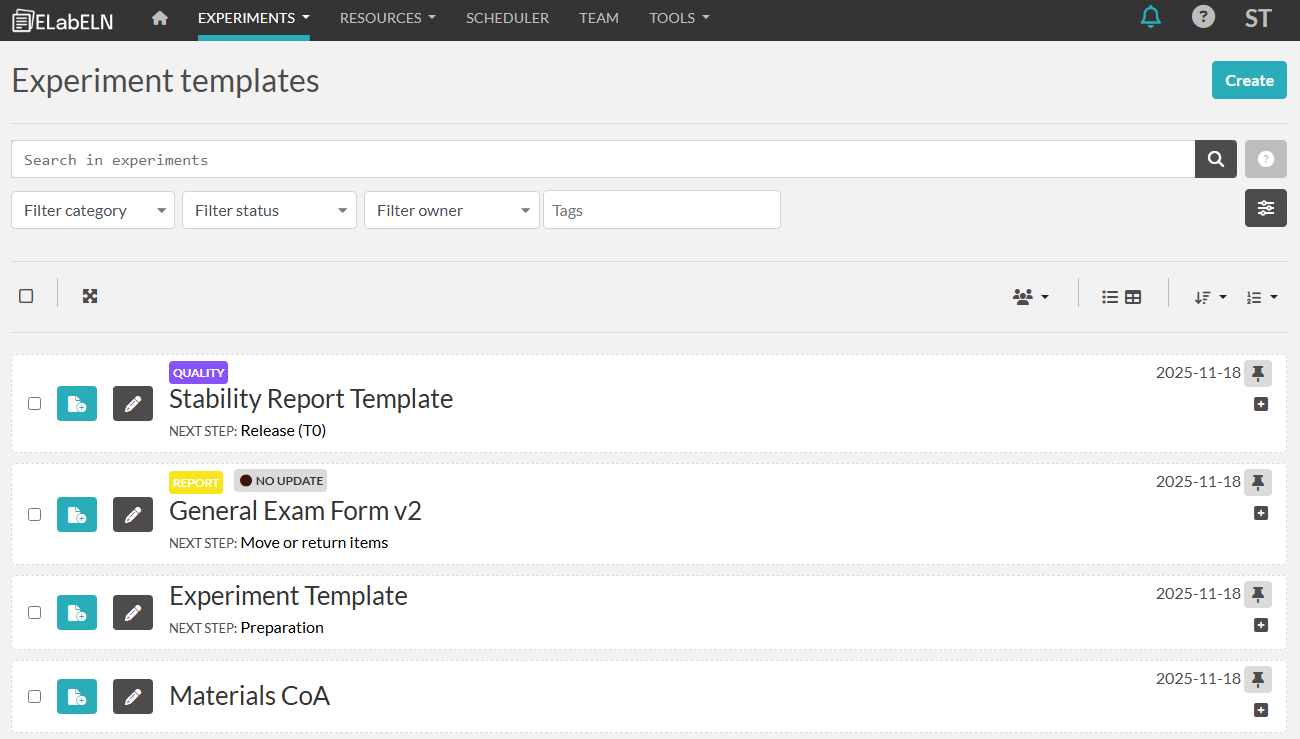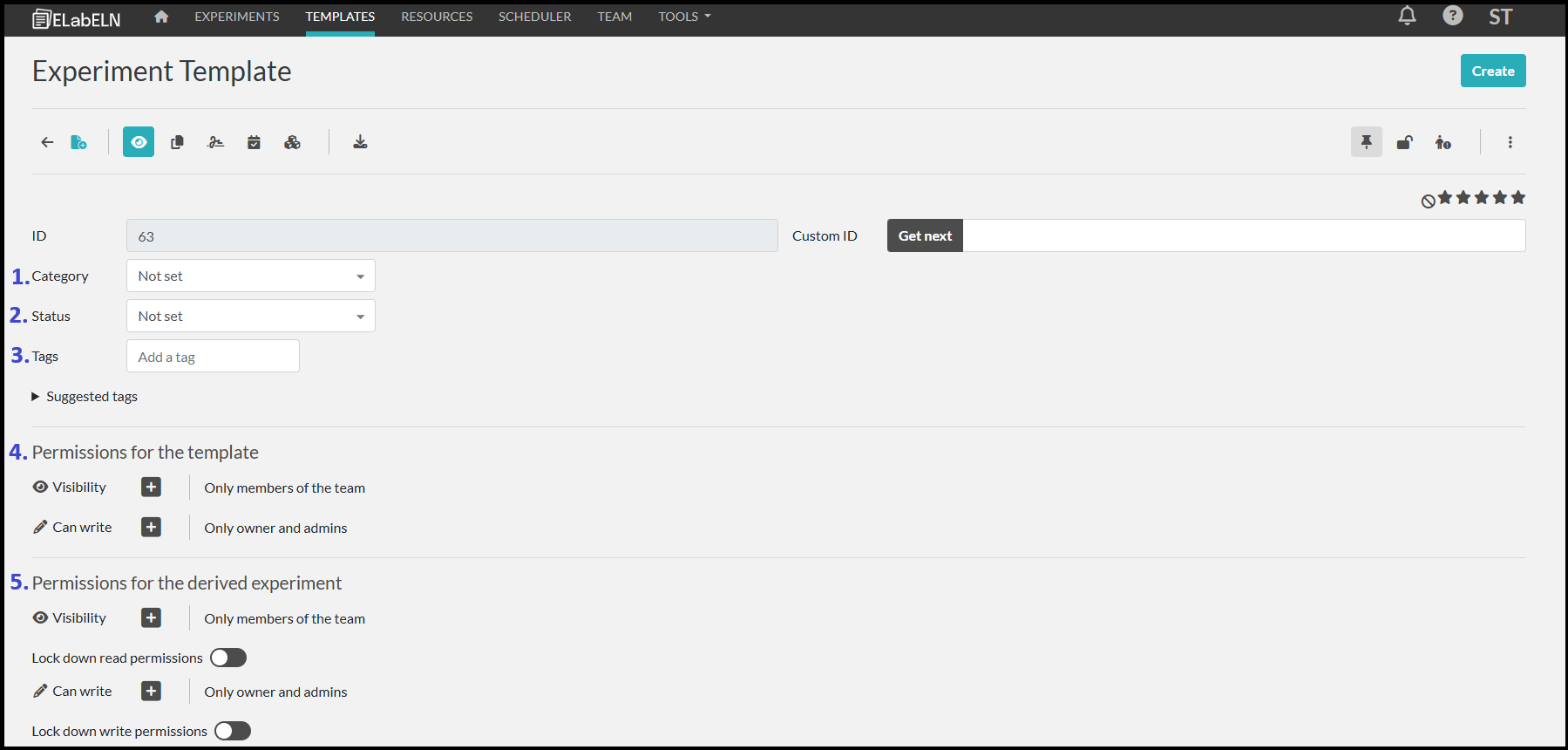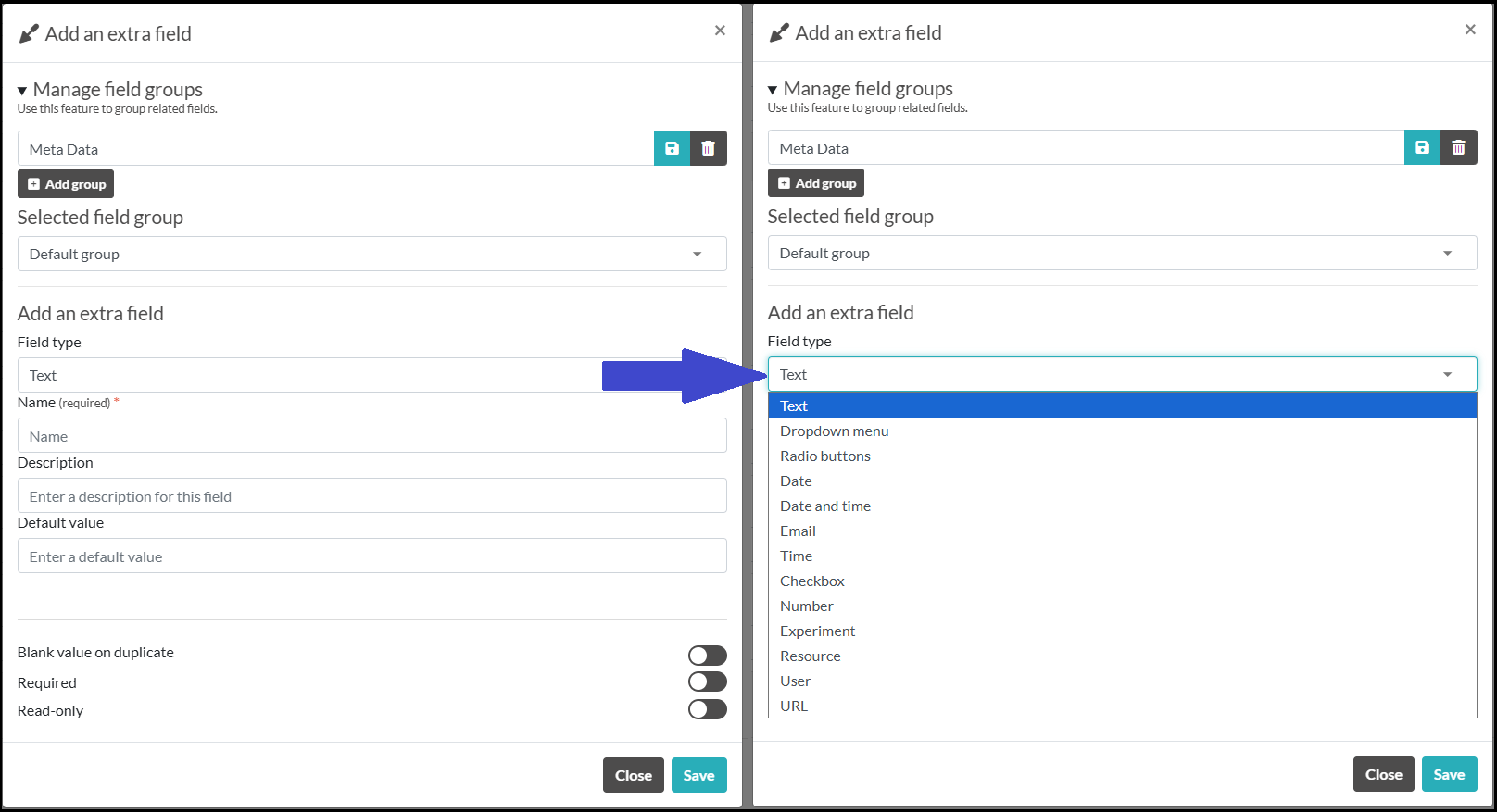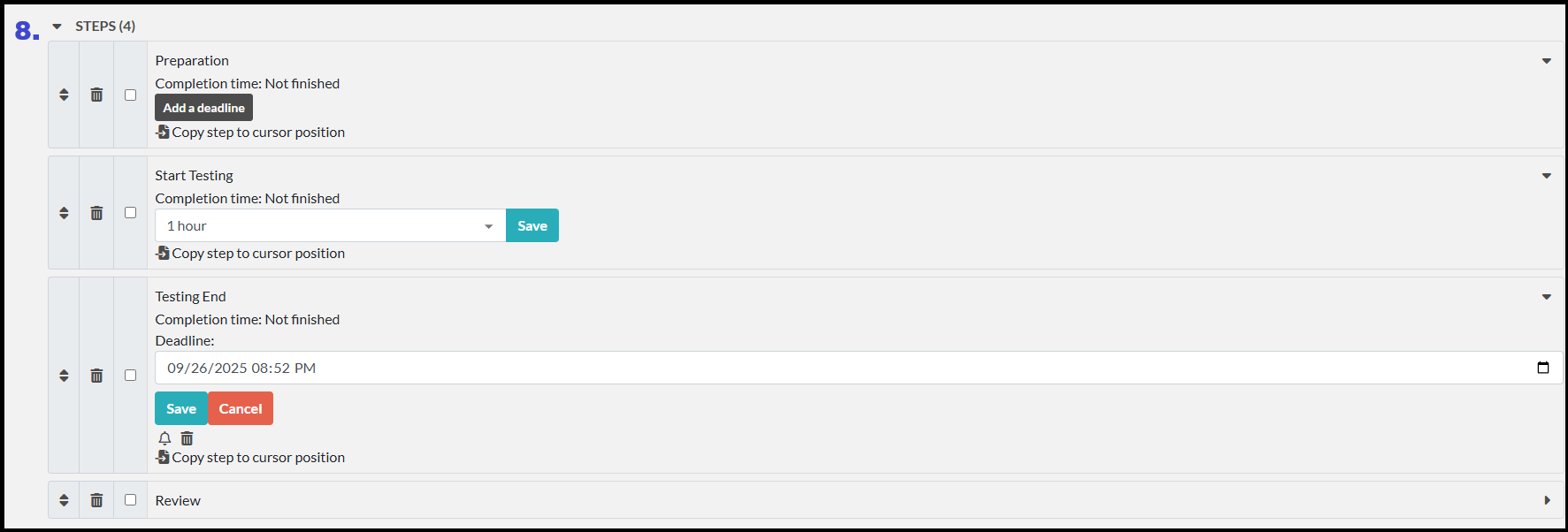Experiment Templates*
Experiment templates can be set up to streamline data collection while maintaining flexibility for each experiment's data capture.
From the templates page, you can search, filter, and change the view of the templates similar to the experiments list screen. Clicking the pencil button will open the template for editing. You can also create a new template by clicking create.
On the edit screen, there are several ways to set up data capture:
1. Experiment Category
The Experiment Category is used to categorize experiments. This category can be used to filter experiments while searching.
2. Experiment Status
You can leave the state as "Not Set" for the template so that the status for new resources must be set manually.
If you want the status for new experiment to be automatic, choose that status in the template.
3. Tags
4. Permissions for the Template
Permissions for the experiment template are to set permissions for who can see the template and who can edit the template.
The toggle lock is another feature used to prevent others from editing the template. Only the person who sets the lock or admins can unlock the template for editing.
5. Permissions for the Derived Experiment
Permissions for the Derived Experiment are to set permissions for who can see the newly created experiments and who can edit that experiment. The template can lock the permissions for derived experiments so that the permissions can not be changed.
6. Main Text Field
The main text field includes a variety of options for tracking data. Using the template, you can set fields that need to be entered for any new resource created.
Hover over each option to see additional formatting abilities: File, Edit, View, Insert, Format, Tools, Table
Additionally, you can import resources using an excel sheet. The excel sheet can include the name of the resource and any information you want displayed in the main text area. More details on importing below.
7. Extra Fields
You can track meta data via specific fields below the main text. These fields can be grouped together for organization.
When creating a new field, you can select the group, type of field, name of the field, any description, and enter in selection choices for dropdown menu or radio buttons.
You can also choose:
- Whether data in that field is copied to a new resource.
- Whether that field is required.
- Whether that field is read-only (not editable).
You can also Load Fields from other Templates to reduce time in repeating fields you have set up for other templates.
8. Steps
Steps can be added to the Template and edited for each individual experiment.
Steps can be used to track sequential workflows or to set deadlines for upcoming tasks.
Once you set a deadline, you can edit the information to a specific day and time, as well as turn on the notification using the bell symbol.
9. Linked Experiments
Admins can set experiments to automatically link to any experiment created from this template.
Or users can link individual experiments and resources once created.
To link an experiment, start typing the title of the experiment in the field and select the correct option and click Add.
To delete a linked experiment, click the trash can next to it.
10. Linked Resources
Admins can set any resource to automatically link to any experiment created from this template.
Or users can link individual resources once created.
To link a resource, start typing the title of the resource in the field and select the correct option and click Add.
To delete a linked resource, click the trash can next to it.
11. Attached Files
Any files can be uploaded to the template to be automatically included in experiments created from this template. Files can be versioned and archived as needed.

